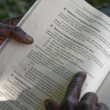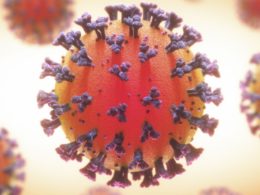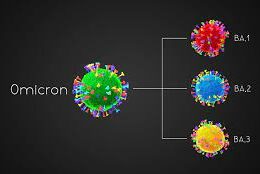The news of a new HIV variant has shaken the world, and Zimbabweans have not been spared.
The HIV pandemic continues to take a life every minute and scientists have long worried about the evolution of new, more transmissible, variants of HIV.
Social media sites have been awash with reports of the new strain which is said to be deadlier and progresses to Aids faster than previous strains, if untreated.
However, not all information shared has been true, some has caused fear, alarm and panic globally.
CITE has put together a factsheet on the latest developments on the new strain, as informed by health experts.
A new HIV strain, should we be worried?
Newly published research from the Netherlands revealed the existence of a more transmissible and damaging variant of HIV.
According to UNAIDS, people living with the newly revealed HIV subtype experience double the rate of immune system decline (CD4 count), have higher HIV viral loads (amount of virus in the blood) and are vulnerable to developing AIDS two to three times faster after diagnosis than if they were living with other strains of the virus.
UNAIDS reports that the study, led by researchers from the University of Oxford’s Big Data Institute, was the first to discover this highly virulent variant of the subtype-B of HIV. The study also revealed that the variant has been circulating in the Netherlands for years and remains receptive to HIV treatment.
Local public health experts from the Health and Child Care Ministry in Zimbabwe have said this newly identified variant does not represent a major public health threat but underscores the urgency of speeding up efforts to halt the HIV pandemic.
Bulawayo Provincial medical director Dr Maphios Siamuchemu said while the new strain was reported in Europe, it was a reminder on the action needed to attain the Agenda 2030 targets to eliminate HIV.
He said the strain could easily find its way into the country as people were highly mobile and sexual beings.
“It is comforting that this new strain responds well to available treatment options. However, the fact that it has been reported in the Netherlands does not guarantee our safety. As humans, we are very mobile and people are very sexual. This should actually be a reminder that we are all responsible as Zimbabwean and global citizens to play our part and act responsibly in the fight against HIV. It can take one traveller having unprotected intercourse, let us work together towards national targets to achieve zero new infections by 2030. The message is still the same, condomise and reduce the number of sexual partners, avoid all risky behaviour, be responsible, test regularly, should you test positive, start treatment as soon as possible and be consistent,” he said.
He said there were other strains of HIV reported in the past but had not been viral in the pre-covid era as people are now familiar with variants and strains due to their experience with the Covid19 pandemic.
Globally, HIV remains the deadliest pandemic in recent history, an estimated 79 million people have become infected with the virus.
The World Health Organisation (WHO) reports that an estimated 36 million people have died from AIDS-related illnesses since the start of the pandemic and 1.5 million people were newly infected with HIV in 2020. Of the 38 million people living with HIV today, 28 million are on life-saving antiretroviral therapy, keeping them alive and well and preventing transmission of the virus.
About HIV
The Human Immunodeficiency Virus (HIV) targets the immune system and weakens people’s defence against many infections and some types of cancer that people with healthy immune systems can fight off. As the virus destroys and impairs the function of immune cells, infected individuals gradually become immunodeficient. Immune function is typically measured by CD4 cell count.
The most advanced stage of HIV infection is acquired immunodeficiency syndrome (AIDS), which can take many years to develop if not treated, depending on the individual. AIDS is defined by the development of certain cancers, infections or other severe long-term clinical manifestations.
Some of the signs and symptoms
The symptoms of HIV vary depending on the stage of infection. Though people living with HIV tend to be most infectious in the first few months after being infected, according to UNAIDS, many are unaware of their status until the later stages. In the first few weeks after initial infection people may experience no symptoms or an influenza-like illness including fever, headache, rash or sore throat.
As the infection progressively weakens the immune system, they can develop other signs and symptoms, such as swollen lymph nodes, weight loss, fever, diarrhoea and cough. Without treatment, they could also develop severe illnesses such as tuberculosis (TB), cryptococcal meningitis, severe bacterial infections, and cancers such as lymphomas and Kaposi’s sarcoma.
HIV Transmission
HIV can be transmitted via the exchange of a variety of body fluids from infected people, such as blood, semen and vaginal secretions. HIV can also be transmitted from a mother to her child during pregnancy and delivery, especially if the mother does not enter a PPTCT (Prevention of Parent to Child Transmission) programme.
The world Health organisation states that individuals cannot become infected through ordinary day-to-day contact such as kissing, hugging, shaking hands, or sharing personal objects, food or water.
It is important to note that people with HIV who are taking ART and are virally suppressed do not transmit HIV to their sexual partners. Early access to ART and support to remain on treatment is therefore critical not only to improve the health of people with HIV but also to prevent HIV transmission.
Treatment
HIV can be managed by treatment regimens composed of a combination of three or more antiretroviral (ARV) drugs. Current antiretroviral therapy (ART) does not cure HIV infection but highly suppresses viral replication within a person’s body and allows an individual’s immune system recovery to strengthen and regain the capacity to fight off opportunistic infections and some cancers.
Since 2016, WHO has recommended that all people living with HIV be provided with lifelong ART, including children, adolescents, adults and pregnant and breastfeeding women, regardless of clinical status or CD4 cell count.
By June 2021, 187 countries had already adopted this recommendation, covering 99% of all people living with HIV globally. In addition to the treat all strategy, WHO recommends a rapid ART initiation to all people living with HIV, including offering ART on the same day as diagnosis among those who are ready to start treatment. By June 2021, 82 low- and middle-income countries reported that they have adopted this policy, and approximately half of them reported country-wide implementation.
Globally, 28.2 million people living with HIV were receiving ART in 2021. The global ART coverage rate was 73% [56–88%] in 2020. However, more efforts are needed to scale up treatment, particularly for children and adolescents. Only 54% [37–69%] of children (0–14 years old) were receiving ART at the end of 2020.
The international community has committed to ending the AIDS epidemic as a public health threat by 2030 – an ambitious target of the 2030 Agenda for Sustainable Development adopted by the United Nations General Assembly in September 2015.
Ten million people living with HIV worldwide are not yet on treatment, fuelling the continued spread of the virus and potential for further variants. There is urgent need to deploy cutting-edge medical innovations in ways that reach the communities most in need.








